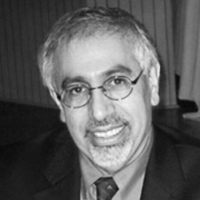Question
I need to know a diagnostic technique to test for Tullio's phenomenon. I read that this can be done by introducing a high-intensity signal to the ear, whether it be speech or pure tones. What levels of intensity and what duration should be used with pure tone stimuli?
Answer
The Tullio phenomenon refers to the activation of vestibular symptoms in response to sound stimuli. It has been reported in patients with a variety of abnormalities including superior canal dehiscence, perilymph fistula, Meniere's disease, etc.
I believe the test mentioned in the question is the vestibular evoked myogenic postentials (VEMP). In this test, high intensity acoustic clicks or tone bursts evoke short-latency electromyographic (EMG) responses from the neck (sternocleidomastoid) muscles. It has been shown that in many (but not all) patients with Tullio phenomenon, the sound threshold for VEMPs is usually less than 70dB nHL. In patients without Tullio phenomenon and in normal individuals, the threshold is significantly higher.
There are many resources online about the instrumentation and sound intensities for VEMPs. Here is an example: www.gnotometrics.com/insightsvemp.pdf
A word of caution. Although recording VEMPs is straightforward, it does need equipment for recording EMGs and evoked potentials. As yet, there are no clinical standards for performing VEMPs and the normative values vary with the equipment and procedures used. In addition, the procedure does not provide information about the underlying cause of the Tullio phenomenon. It simply confirms it.
Eye movements in response to sound stimulations have also been recorded in some patients with the Tullio phenomenon. In particular, patients with superior canal dehiscence demonstrate torsional/vertical eye movements consistent with the excitation of the superior canal. However, these responses cannot be measured by ENG because ENG is not sensitive to torsional eye movements and the vertical channel is usually noisy and contaminated by eye blinks. Recording these eye movements requires either scleral search coils or less optimally, video-nystagmography. Again, no clinical standards are available yet.
Kamran Barin, Ph.D. is the Director of Balance Disorders Clinic at the Ohio State University Medical Center and Assistant Professor, Department of Otolaryngology-Head and Neck Surgery, Department of Speech and Hearing Science, and Biomedical Engineering Program. He received his Master's and Doctorate degrees in Electrical/Biomedical Engineering from the Ohio State University. He has taught national and international courses and seminars in different areas of vestibular assessment and rehabilitation. He has served on many NIH and NASA panels and was an appointed member of the Equilibrium Subcommittee of the American Neurotology Society.

